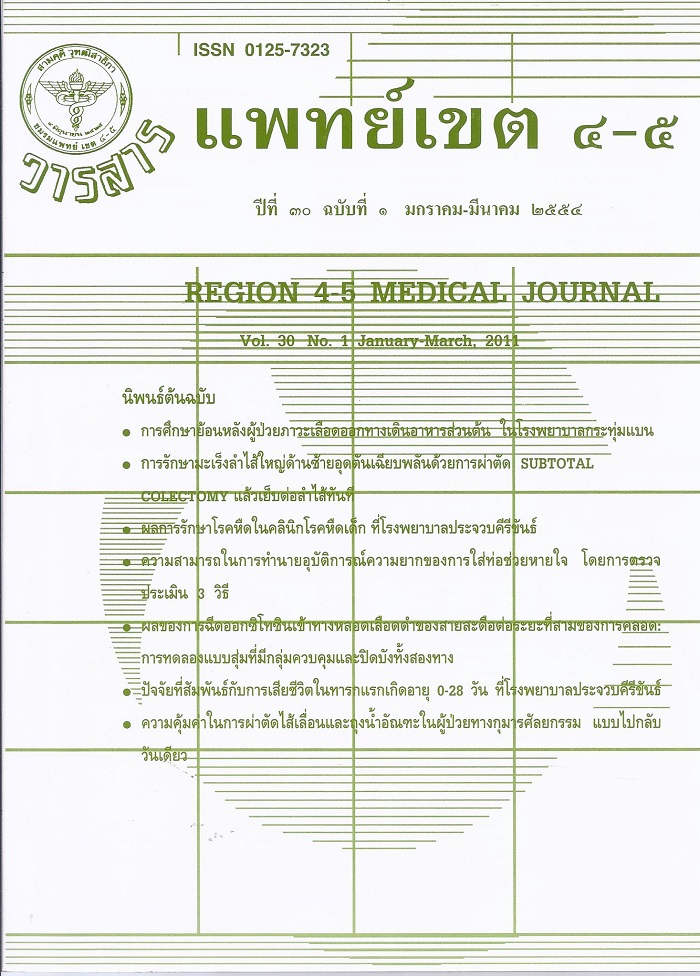Incidence and Risk Factors for Bradycardia During Spinal Anesthesia in Banpong Hospital
Keywords:
bradycardia, spinal anesthesiaAbstract
Cardiovascular side effects such as bradycardia and asystole can occur unexpectedly at any time during spinal anesthesia. In many reports, asystole was preceded by slowing of the heart rate. Factors that predisposed to bradycardia during spinal anesthesia may help predict which patients are at risk for cardiac arrest and provide important clues about the etiology and the most appropriate treatment.
Objectives : To evaluate the incidence and risk factors of bradycardia during spinal anesthesia.
Methods : A retrospective study was performed in 958 cases who underwent elective or emergency surgery under spinal anesthesia at Banpong Hospital from January 2009 to December 2009. Obstetrical cases and combined general anesthesia were excluded. The patient characteristics, medications, anesthetic and surgical data were collected and analyzed with chi-square tests and logistic regression models.
Results : The incidence of moderate to severe bradycardia in this study were 7.9 % and timing of onset were 0-135 minutes after anesthetic injection. Cardiac arrest was not found. The risk factors were age older than 60 years, low baseline heart rate (< 60 beats per minute), prior use of beta-blocker and genitoperineal surgery.
Conclusions : Moderate or severe bradycardia may occur at any time during spinal anesthesia, the anesthesiologist must maintain vigilance throughout the entire case. The underlying mechanisms resulting in moderate and severe bradycardia during spinal anesthesia may be different and mutifactorial.
Downloads
Published
How to Cite
Issue
Section
License
ลิขสิทธิ์บทความเป็นของผู้เขียนบทความ แต่หากผลงานของท่านได้รับการพิจารณาตีพิมพ์ลงวารสารแพทย์เขต 4-5 จะคงไว้ซึ่งสิทธิ์ในการตีพิมพ์ครั้งแรกด้วยเหตุที่บทความจะปรากฎในวารสารที่เข้าถึงได้ จึงอนุญาตให้นำบทความในวารสารไปใช้ประโยชน์ได้ในเชิงวิชาการโดยจำเป็นต้องมีการอ้างอิงถึงชื่อวารสารอย่างถูกต้อง แต่ไม่อนุญาตให้นำไปใช้ในเชิงพาณิชย์




